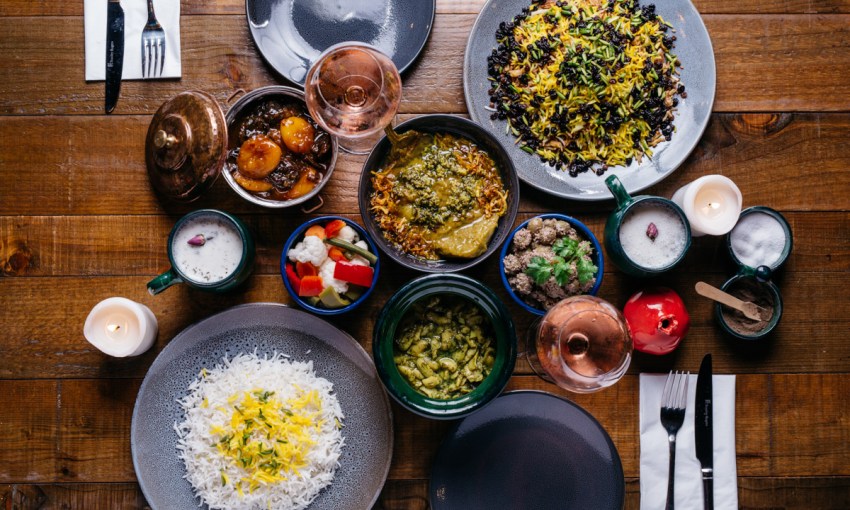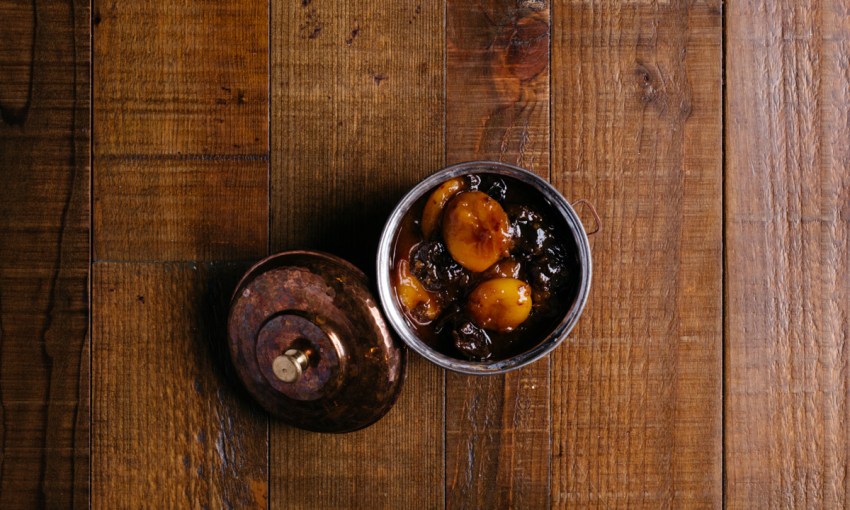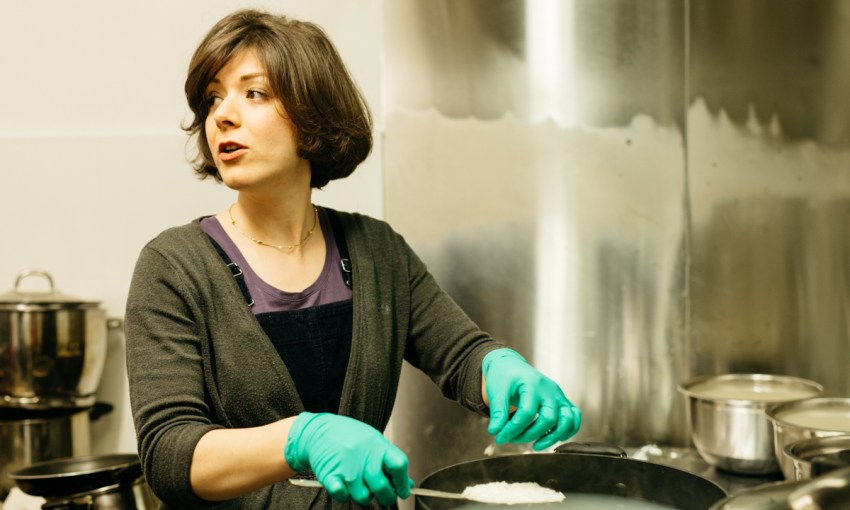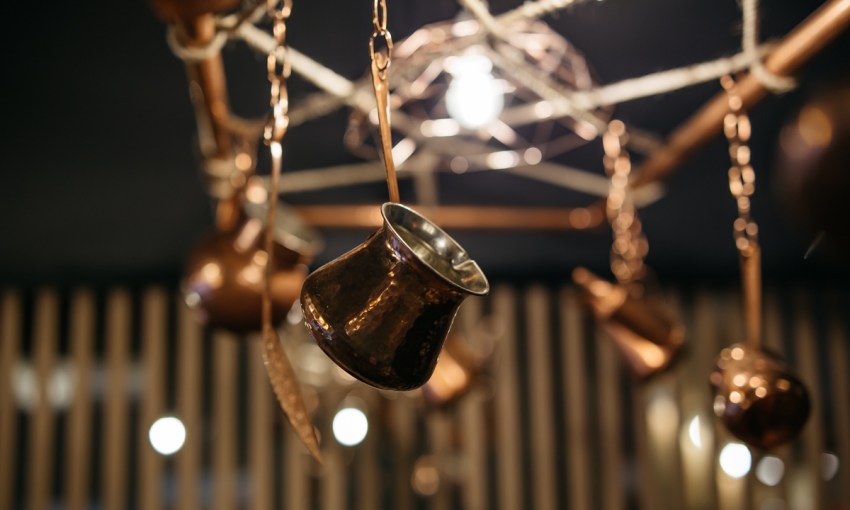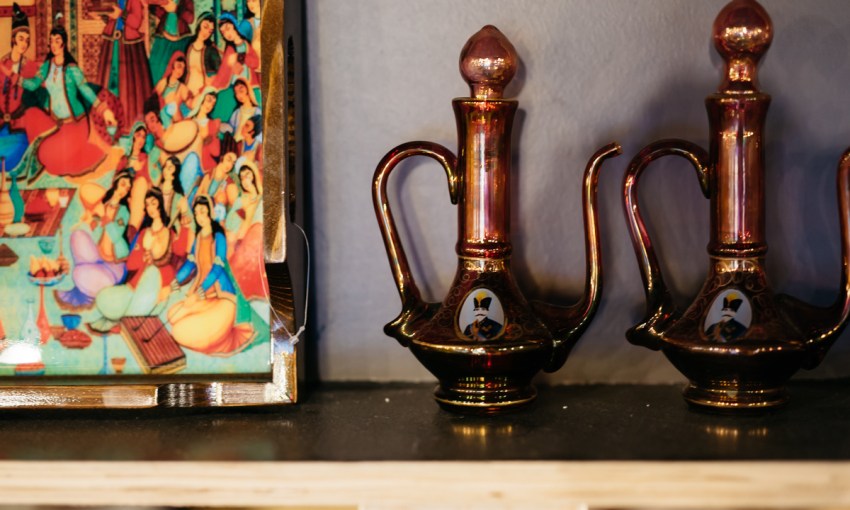Research and reconnaissance on Pulteney Street.
Everything you need to know about Persian food and where to get it
For Naaz on Pulteney, creating authentic homestyle Persian cuisine is all about the finer details – from time-consuming techniques used in preparing ingredients to the thorough cooking methods that bring them all together for a complete dish.
In February we brought you the backstory on Naaz and its owners Mali Ershad and Omid Moghaddami, and Parivash (Pari) Nezhad and Farhad Meshki ahead of their opening.
Naaz on Pulteney
260 Pulteney Street, Adelaide
Monday – Saturday: 6pm-10pm
For bokings contact naazonpulteney@gmail.com
We loved their story and so did you, but upon dining at Naaz the first time, we discovered a menu entirely foreign to us. Completely uninitiated in Persian food – we asked the four owners if we could come back for another story, learn more about their menu, the process and the history of Persian food.
Here’s everything we found out.
Origins and method
The concept behind Naaz’s hospitality offering is derived from the vibrant food culture of Iran’s northern city of Rasht, capital of the country’s Gilan province. Recognised as a UNESCO creative city of gastronomy for having over 160 types of food, Rasht is a glowing example of the rich diversity and history infused in Persian cuisine.
Drawing from the township’s myriad gastronomic inspirations, Pari says their carefully curated menu is designed to reflect the complexities and unique flavours of authentic Persian dishes.
“I think our cooking methods and processes are totally different from our neighbours in that area,” Pari says.
“We can make different foods from simple and limited ingredients, just give us some potatoes, onions and the main element saffron, I think we can make more than ten dishes with that because our cooking methods – for example frying, smoking or tossing, roasting – we can do everything with just simple elements.”
Typical ingredients

The couples say they cook with a range of ingredients commonly found in Persian food such as turmeric, walnuts, pomegranate, eggplant and cinnamon. Omid says they source many of their key ingredients from Iran to maintain authenticity in their cooking.
“One of the most important of them is Persian wild barberries. This type of berries are not available here so we have to ask the importer to import them for us,” Omid says.
“We use saffron in many dishes and we ourselves import [them] from Iran. Quality-wise we cannot compare Australian saffron with our saffron. Pistachios are available here, but because [of the way] we use them, we have to ask the supplier to import this type of pistachios because quality-wise it’s unique.”
Another core ingredient is, of course, rice – which is used in most of their dishes. “We say that we don’t eat rice, we breathe rice,” Pari says with a laugh.
In order to achieve the right texture and consistency with their rice, Mali says her and Pari will prepare the amount they need for service in large batches through a lengthy process.
“We are washing the rice the night before we want to work, the processing time is about 30 minutes then resting time,” Mali says. “After washing and cooking, we have to put it in the basket and again wash it with cold water then we have to put it in the pan and it should be cooked for about 15 minutes with steam for it to be ready.”
Pari adds, “If you calculate the process all together [it’s] about one-and-a-half hours or more. Cooking Persian meals needs patience.”
The Best Dishes to try
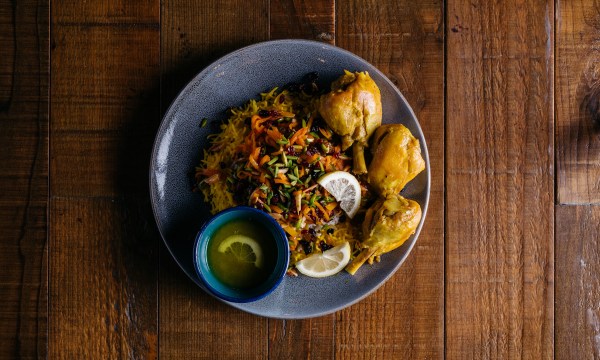
Morasa polo
The morasa polo dish is a Persian staple which translates to “Jewelled rice” and we can see why – it sits very prettily on the plate. Pari says it features a variety of flavours and is served with slow-cooked tender chicken.
“Apart from cooking rice with ingredients, we start with peeling orange, cut it and soak it in the water and boil it two times and then add sugar, so it takes one or two hours,” Pari says. “For nuts, separately I roast them and then adding currants, barberries [and] there are different processes as well.”
The other two rice-based main courses, zereshk polo and baghali polo ba mahiche are served with slow-cooked chicken and lamb respectively.

Baghali polo ba mahiche
“Each of the elements, if I include chicken [or lamb] and rice, ten to twelve ingredients, each with five to six steps, sometimes ten steps all together. It [takes] around 50 steps to do these dishes,” Pari says.
Casseroles or “khoresht” are another popular dish in Iran which Naaz have four variations of on their menu. Mali says their ghormesabzi is a very traditional Iranian casserole.
“All are not easy. We are doing different veggies for these kind of casserole[s] then we have to clean it, wash it well, cut it in small pieces, fry it, then we can put it in a freezer bag and put it in the fridge. Once we are going to make [casseroles] we can use that ready veggies because we are doing this kind of job weekly.”
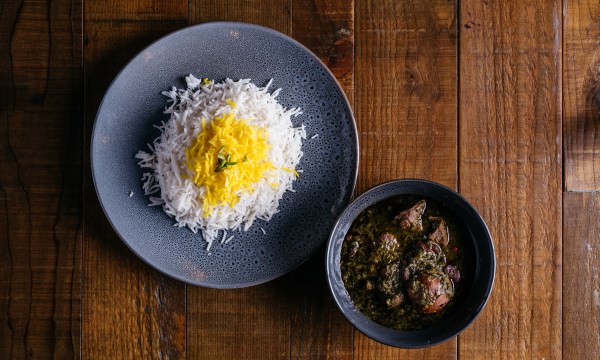
Ghormesabzi
Shish Andaz is one of three vegetarian main dishes the restaurant serves which incorporates steam-cooked eggplant, rice and a host of other elements.
Naaz have a number of appetisers, side dishes and a tasting platter to share as well as desserts including traditional Persian ice cream. The ice cream alone is worth going for – it’s house-made, light like a sorbet but still with the creaminess you need to feel fully sated.
It’s incredible to see the tenacity of humans such as Mali, Omid, Pari and Farhad, who picked up their lives in Iran and moved half way around the world to Adelaide to start new lives. It’s even more incredible, as an Adelaidean, to be able to walk into a restaurant on Pulteney Street and sit down and be served the food and experience the culture of a place you may otherwise have never discovered. This is Adelaide food and drink culture at its best.




